Entanya’s fisheye lenses are super wide-angle fisheye lenses that can capture an even wider area than a typical fisheye lens. While the field of view of ordinary fisheye lenses is about 180°, the field of view of Entaniya’s fisheye lenses is 250° (HAL250 series), making these special lenses capable of capturing images as far back as the camera.
his super wide-angle fisheye lens is widely used in fields such as planetariums and other dome contents and VR image production, but because it is a wide-angle lens that has never existed before, it can be used in a variety of ways depending on your ideas.
In this article, we will introduce one such possibility, which is the use of the system for various purposes.
Fisheye lenses used in research applications
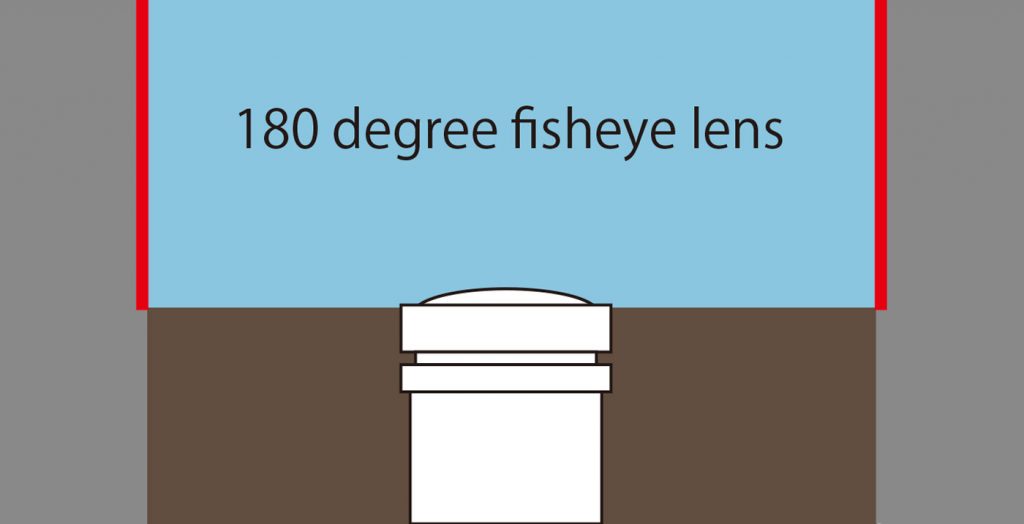
Wide-angle lenses, such as fisheye lenses, are sometimes used to inspect tunnels, pipes, etc., as a single camera can capture a wide area.
For example, a 180-degree fisheye lens will show everything in front of the lens.
The use of a fisheye lens offers advantages over the use of a regular lens, such as the ability to take pictures with fewer cameras and to see the entire subject at the same time.
Resolution and blind spot issues
Peripheral resolution issues
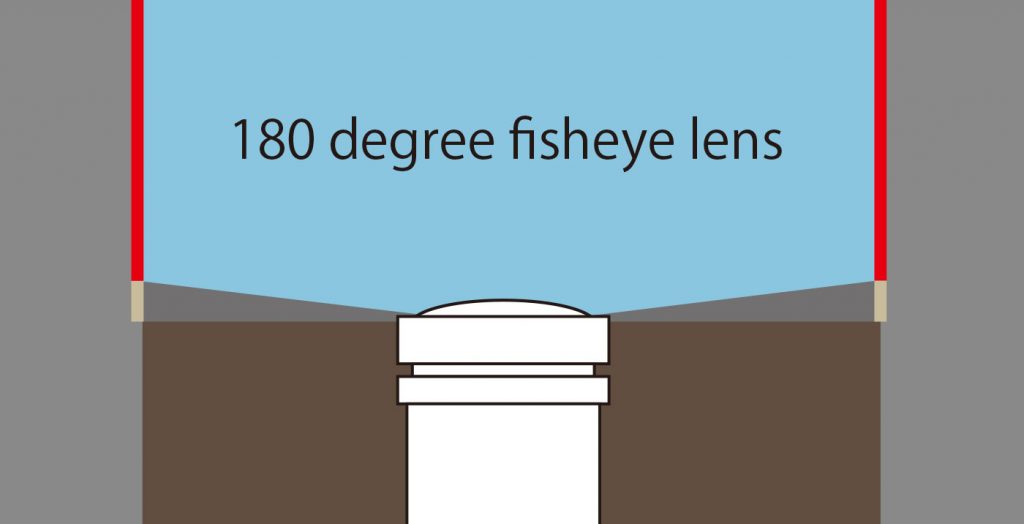
With most fisheye lenses, the resolution in the center of the lens is high, but the degree of blurring and blurring, called peripheral attenuation and image flow, increases toward the periphery, making it difficult to see the peripheral areas.
Problems with blind spots on uneven surfaces

Problems with blind spots on uneven surfaces
camera, but there is the problem of blind spots created when uneven surfaces are encountered.
When shooting on uneven surfaces as described above, blind spots will occur around the corners.
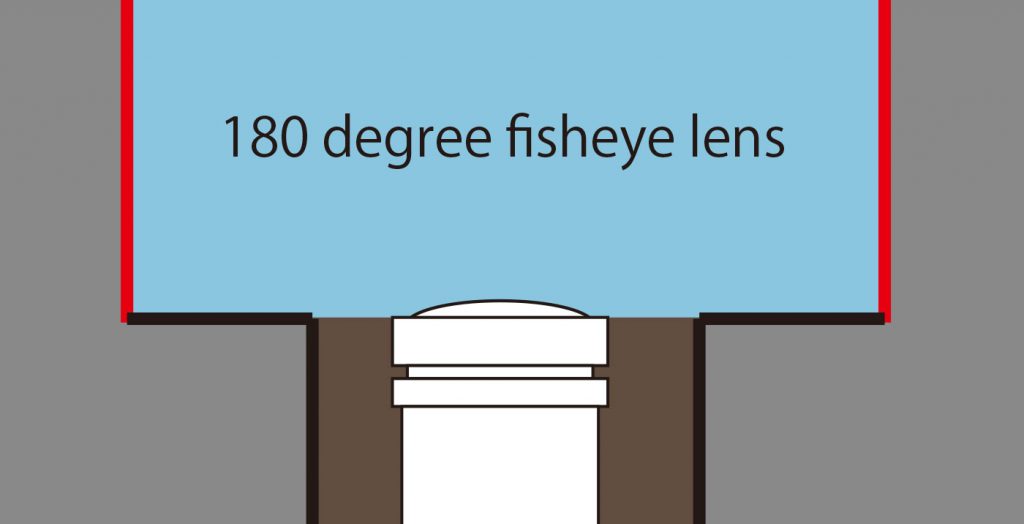
Many blind spots are eliminated as the camera moves forward, but the “backside” areas of the bumps remain unconfirmed.
For example, the back side of a wall cannot be seen using a 180-degree fisheye lens.

With poor resolution in the surrounding area, blind spots will be left behind.
Problem solved by using the HAL series of super wide-angle fisheye lenses

The HAL 250 series, a fisheye lens with a 250-degree field of view, can be used to capture images diagonally behind the camera, which is not possible with a normal fisheye lens.
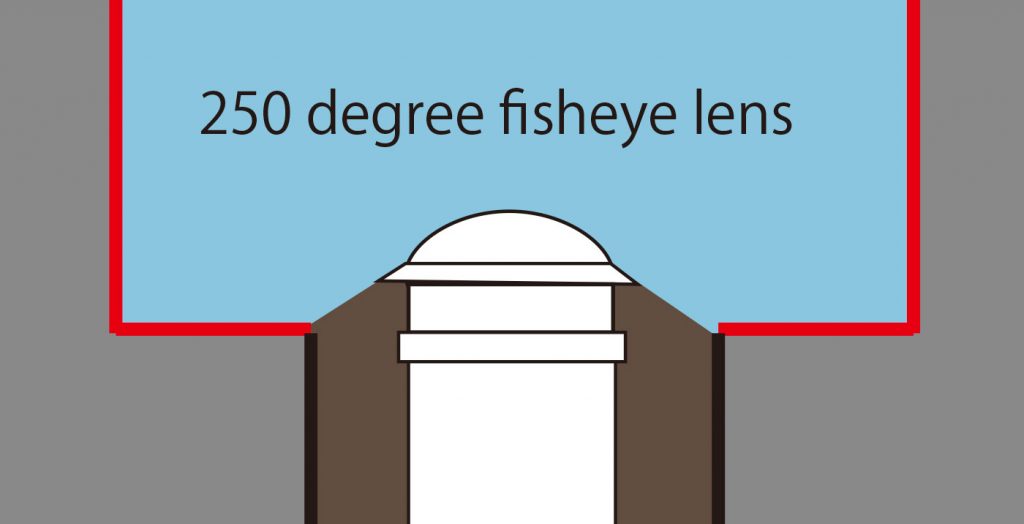
The above image shows the field of view of the 250-degree fisheye lens HAL 250, which can project diagonally behind the lens, allowing the photographer to capture the “backside” of a wall, which is not possible with a 180-degree fisheye lens.
Even in situations where it is not possible to turn the camera in a tight space, it can be checked simply by pointing it in a forward direction, thus greatly reducing the time required for the survey.
Sharp image around the perimeter as well.
The Entaniya Fisheye HAL 250 series lenses were originally designed for 360-degree VR purpose.
In the case of 360-degree photography, multiple images must be stitched together, so the peripheral areas must also provide a sharp image.
Therefore, the Entaniya Fisheye HAL 250 series is designed with less peripheral attenuation and sharp, aberration-free design, so that sharp images can be obtained not only in the 180-degree portion but also in the 250-degree portion.
250° ultra-wide angle fisheye lens
Actual verification
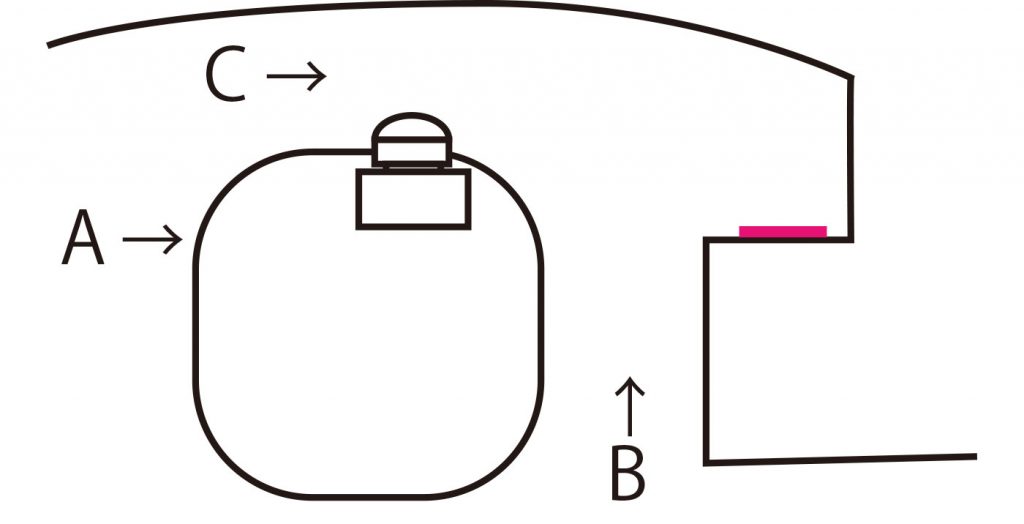
A camera with a 250-degree fisheye lens HAL 250 attached is positioned as shown in the figure above to take the picture. Place the camera on the table and, with the camera facing forward, attempt to capture the target in the red area behind the pillar on the right.
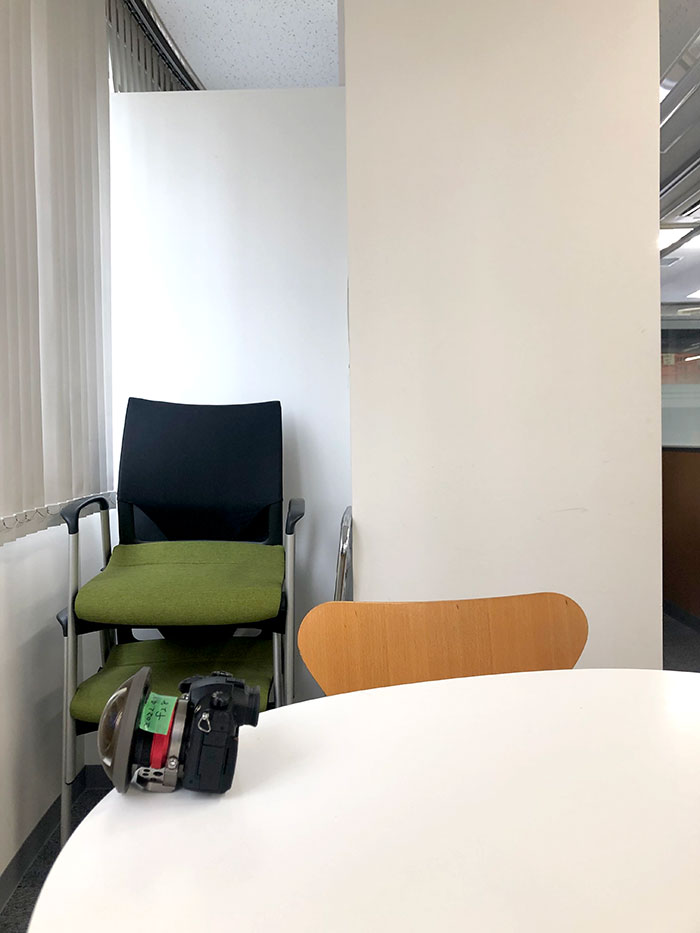
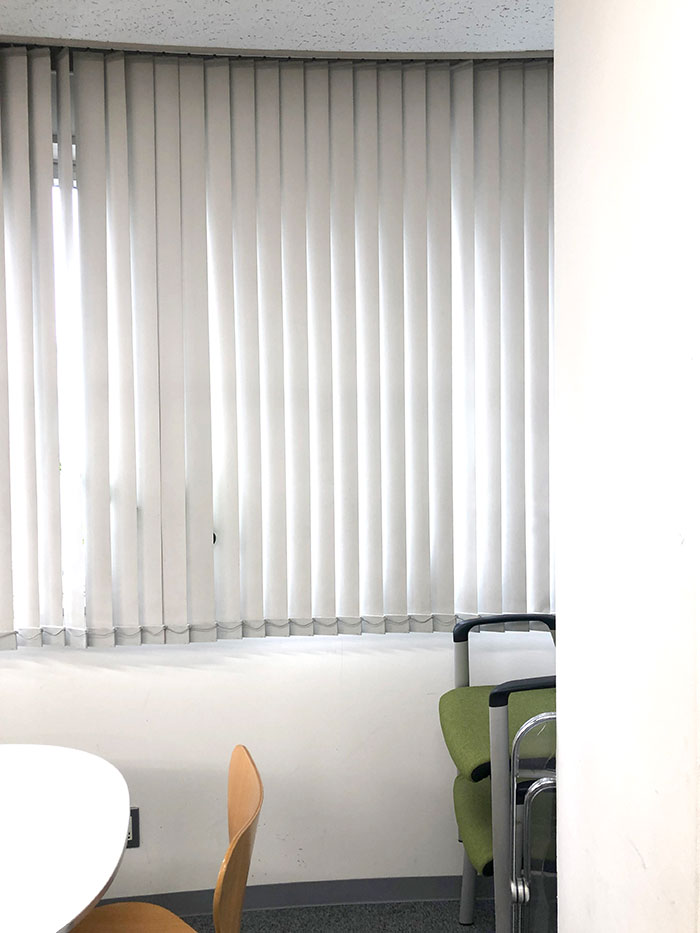

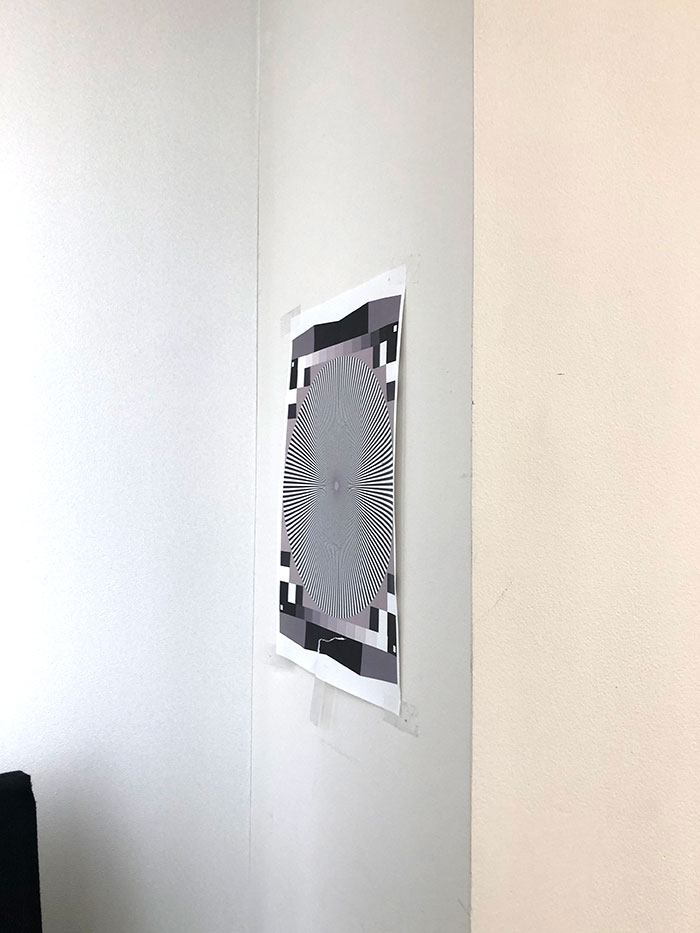
If you check from the "A" position, you cannot see the target.
When viewed from position "B," the target cannot be seen because it is behind the pillar.
From the "C" position, you can see the target, but it will be diagonally behind the camera and cannot be taken with the camera facing forward with a normal or fisheye lens.
In such an arrangement, the target cannot be seen with a 180-degree fisheye lens.
Taken with Entaniya Fisheye HAL 250
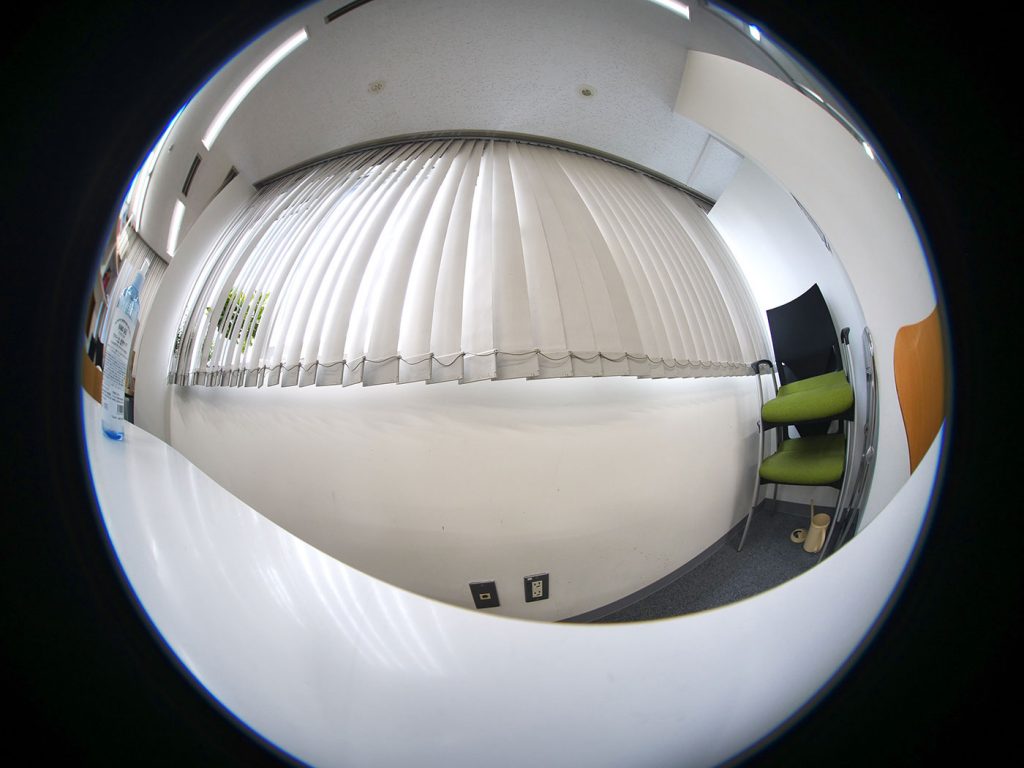
The above image were taken with the Entaniya Fisheye HAL 250, a 250-degree fisheye lens.
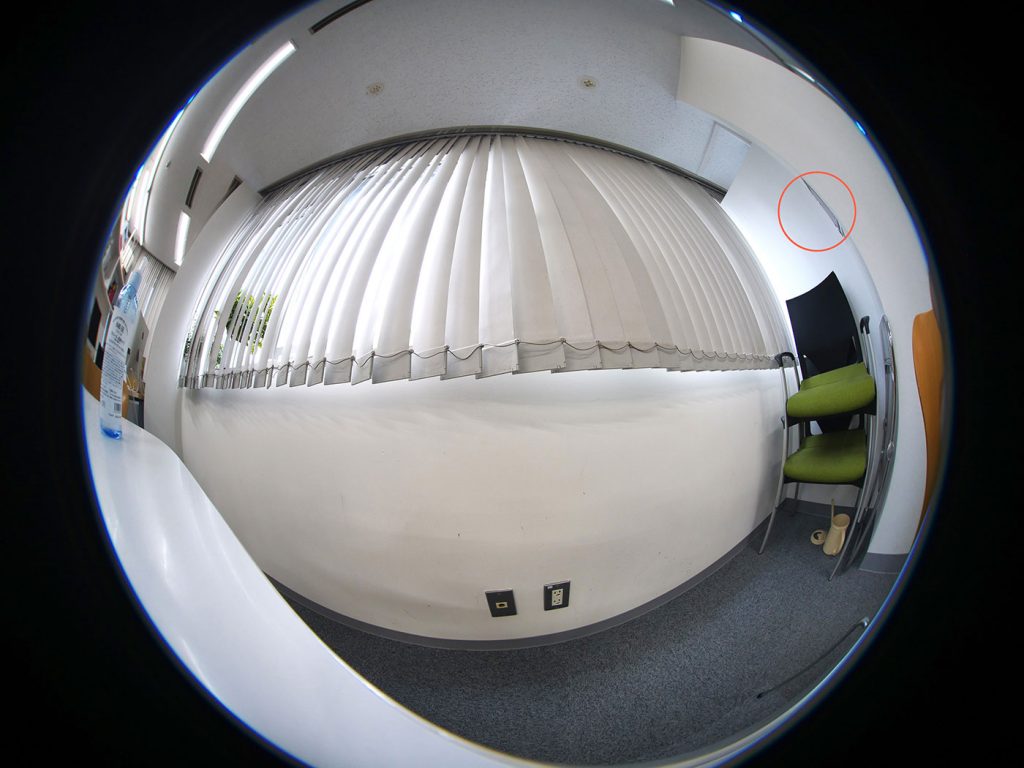
Check the upper right corner of the photo to see the target. (circled in red).
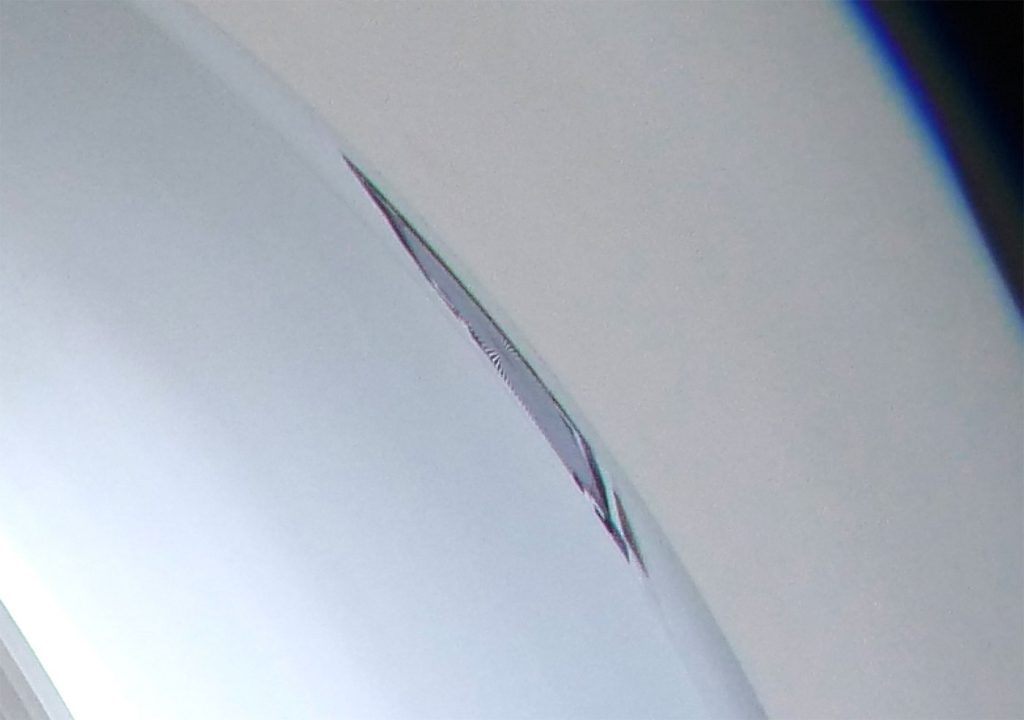
If you zoom in on the target area, you can see the target.
This is the area near the outside of the circumferential image, but it is a sharp image.
Thus, an ultra-wide-angle fisheye lens allows you to see behind the wall without having to turn and keep the camera facing forward.

